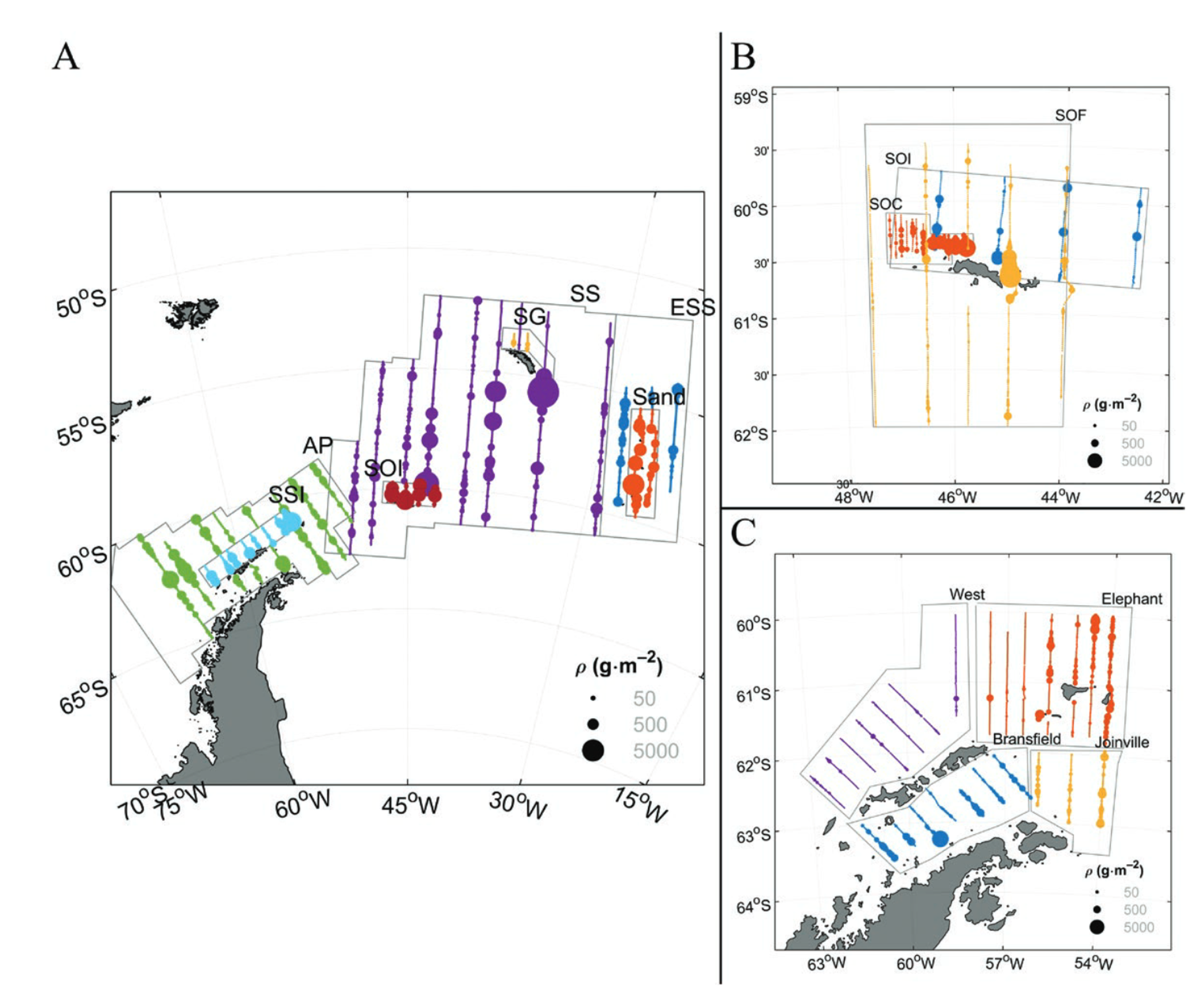
Antarctic ecosystem
Biomass
Fisheries management
Standing stock of Antarctic krill (Euphausia superba Dana, 1850) (Euphausiacea) in the Southwest Atlantic sector of the Southern Ocean, 2018–19
Summary
A large Antarctic survey in 2018-19 measured how much krill exists in specific regions of the ocean. Researchers found a total of 62.6 million tonnes of krill in the Southwest Atlantic, with an average density of 30 grams per square meter.This is roughly the same amount they found in a similar survey in 2000 (60.3 million tonnes). The krill population appears stable over time, though the distribution has changed somewhat geographically. They found the most krill around the South Orkney Islands and the least around South Georgia.Current krill harvesting is 300,000-400,000 tonnes per year, which is well below the precautionary limit of 620,000 tonnes set by researchers. This suggests that fishing does not threaten the krill population.The survey shows no clear signs that the overall krill population is declining, but regional variations do exist.

1
This figure shows the spatial distribution of Antarctic krill density across the Southwest Atlantic sector during the 2018-19 survey, with color-coded circles representing krill biomass measurements in 1 nautical mile bins. The highest densities (up to 5000 g m⁻²) were found on continental shelves north of the South Shetland Islands, around Elephant Island, and north of the South Orkney Islands, while lower densities occurred in offshore waters. The survey covered multiple CCAMLR subareas and strata, revealing significant spatial heterogeneity in krill distribution across the region.Key Findings
1
Total krill biomass estimated at 62.6 megatonnes (mean density of 30 g/m² over 2 million km²) with 13% sampling coefficient variation2
Biomass comparable to CCAMLR 2000 survey (60.3 megatonnes), but with regional distribution differences3
No evidence of overall stock decline despite climate warming concerns4
Current harvest (300,000-400,000 t/year) substantially below precautionary catch limit (620,000 t)

